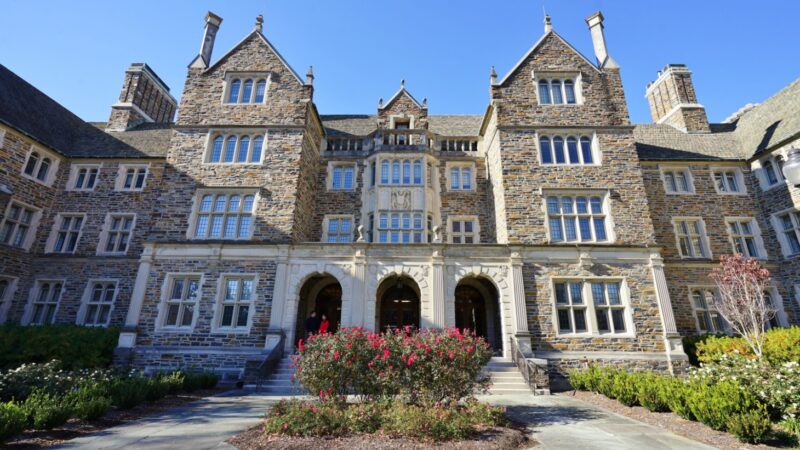The Southern United States has some really excellent public universities that don’t always get the attention they deserve. When people think about top American universities, their minds usually jump to places like Harvard or Stanford. But honestly? Some of the best education and research happening in America is taking place at public universities in the South, and they’re often much more affordable, too.
I want to walk you through what makes these schools special. We’ll look at the research they’re doing, what student life is like, how much they cost, and what opportunities they offer. Some of what I found surprised me, and I think it might surprise you too.
What Makes a Research University Different
Before we dive into specific schools, let’s talk about what “research university” actually means. These aren’t just places where professors teach classes. Faculty members at research universities are actively discovering new knowledge, running experiments, publishing findings, and pushing the boundaries of what we understand about the world.
Why does this matter to you as a student? Well, it means you’re learning from people who are literally creating new information in their fields. You might get to work in labs, help with actual research projects, and see how knowledge gets made. That’s different from just reading textbooks about stuff other people discovered years ago.
Research universities also bring in serious money for their work. We’re talking about hundreds of millions of dollars in research funding. That money pays for equipment, labs, facilities, and opportunities for students to get involved. It attracts talented professors and creates an environment where exciting things are happening.
University of Texas at Austin
UT Austin is probably the most well-known public university in the South, and its reputation is well earned. Located in Austin, which has become one of America’s coolest and most economically vibrant cities, UT combines serious academic strength with access to a thriving job market.
The research happening at UT is massive. The university brings in over $700 million annually in research funding. That’s not just impressive on paper. It means state-of-the-art facilities, cutting-edge projects, and real opportunities for undergrads to get involved in meaningful research.
Computer science and engineering are where UT really shines. Austin’s tech boom has created a perfect situation where university research feeds into industry and vice versa. Students studying computer science at UT can intern at major tech companies during the school year, work on research projects with professors, and often have multiple job offers before graduation.
The business school, McCombs, has a strong reputation, too. But here’s something interesting: UT’s strengths spread across almost every field. The engineering school is excellent. Liberal arts programs are solid. Natural sciences do groundbreaking work. This breadth means you can explore different interests without feeling like you made the wrong choice by not attending a specialized school.
Campus life at UT is vibrant but can feel overwhelming. With over 50,000 students, you’re dealing with huge lecture halls for introductory classes, competition for resources, and a certain level of chaos. Some students thrive in that environment. Others feel lost. If you’re the kind of person who needs structured support and regular check-ins, a smaller university might suit you better.
Austin itself is expensive. Housing costs have skyrocketed as tech companies have moved in. Even as an in-state student, you need to budget carefully for living expenses beyond tuition. For international students, the total cost can be significant, though still less than many private universities.
The diversity at UT is real and valuable. You’ll meet people from all over Texas, the US, and the world. That exposure to different perspectives and cultures is part of the education, even if it doesn’t show up on transcripts.
University of Florida
University of Florida in Gainesville has been quietly becoming one of the top public universities in America. Over the past decade, UF has invested heavily in research, recruited talented faculty, and climbed in rankings. The momentum is real.
Research funding at UF exceeds $900 million annually, which puts it in the top tier of public universities nationwide. Agricultural sciences make sense given Florida’s economy, but UF’s research spans everything from engineering to medicine to environmental science. The school has particular strength in areas related to water, climate, and sustainability, which feels increasingly relevant.
Engineering programs at UF are strong and getting stronger. The school has been expanding its engineering facilities and programs, recognizing that Florida’s economy needs more engineers. Computer science, aerospace engineering, and biomedical engineering all have good reputations and solid job placement.
The medical school and health sciences programs benefit from UF’s hospital system and health science center. If you’re interested in becoming a doctor, researcher, or other health professional, UF provides clear pathways and support for pre-med students.
Gainesville is a classic college town. The university dominates the city, which means everything revolves around students and the school. Some people love this. Others find it limiting. There’s not a huge job market outside the university, so most students need to look elsewhere for careers after graduation, usually to Miami, Tampa, Orlando, or out of state.
Football is huge at UF. Like, really huge. Game days in the fall are massive events, and school spirit runs deep. If you want that traditional American college sports experience, UF delivers. If sports don’t interest you, the intensity around football season might feel excessive.
Cost is a major advantage for Florida residents. In-state tuition at UF is surprisingly affordable compared to what you’re getting in terms of quality. Out-of-state and international students pay more, but it’s still reasonable compared to private universities or many other states’ flagship schools.
University of North Carolina at Chapel Hill
UNC Chapel Hill has this reputation as the “public ivy” of the South, and there’s truth to that. The school combines academic excellence with a beautiful campus and strong traditions. Research funding runs around $1 billion annually, putting UNC among the top public universities for research activity.
The medical school at UNC is genuinely world-class. The combination of the medical school, hospital system, and public health school creates opportunities for students interested in health careers. Pre-med students at UNC have access to research opportunities, clinical experiences, and strong advising that prepares them well for medical school applications.
Business and journalism programs have excellent reputations. The Kenan-Flagler Business School is consistently ranked among the top public business schools. The journalism school has a long history and maintains strong connections to the media industry, though journalism as a field is obviously facing challenges these days.
Chapel Hill is a beautiful college town. The campus has this classic feel with brick buildings and tree-lined paths. The town itself is small but has good restaurants, coffee shops, and cultural events. The Research Triangle, including Raleigh and Durham, is nearby and provides internship and job opportunities in biotech, pharmaceuticals, and technology.
Getting into UNC from out of state is notoriously difficult. The university is required to maintain a certain percentage of in-state students, which means they can’t admit as many out-of-state or international students as they might want. Competition for those spots is intense. In-state students have a much easier path to admission.
Campus culture at UNC leans progressive and activist compared to some other Southern schools. Student engagement in social and political issues is common. Whether that appeals to you depends on your own views and what you want from your college experience.
Basketball matters at UNC even more than football at some schools. The rivalry with Duke is legendary, and basketball season energizes the entire campus. If you’re not into sports, you can still have a good experience, but you’ll definitely be aware of basketball culture.
Georgia Institute of Technology
Georgia Tech in Atlanta is different from the other schools we’ve discussed. It’s focused primarily on engineering, computing, and technical fields. If you know you want to study STEM subjects, Tech is hard to beat. If you’re unsure about your major or are interested in the humanities, other schools might serve you better.
Research at Georgia Tech exceeds $1 billion annually, concentrated in engineering and computing. The school does cutting-edge work in robotics, artificial intelligence, aerospace, and biomedical engineering. Companies recruit heavily at Tech because they know graduates have strong technical skills and practical experience.
The computer science program is elite, competing with programs at schools like MIT and Stanford. Job placement for computer science graduates is exceptional, with students regularly landing positions at major tech companies or founding their own startups. Atlanta’s growing tech scene helps, giving students access to internships and networking opportunities.
The workload at Georgia Tech is legendary. Students joke about the difficulty, but it’s genuinely challenging. If you’re not prepared for intense academics and long hours of studying, Tech might be overwhelming. The school has been working on student support and mental health resources, recognizing that the academic pressure can be difficult.
Campus culture is more diverse than you might expect at a technical school. About 40% of students are women, which is high for engineering schools. International students make up a significant portion of the student body, creating a global atmosphere on campus.
Atlanta provides real advantages. It’s a major city with a strong economy, cultural attractions, and a diverse population. Students can find internships, part-time work, and entertainment options that wouldn’t exist in a smaller college town. The cost of living is reasonable for a major city, though not cheap.
One challenge at Tech is that the focus on technical fields is so strong that other areas feel secondary. If you want a well-rounded liberal arts education alongside your engineering degree, you might not get quite the breadth you’d find elsewhere. The school is working on strengthening humanities and social sciences, but it’s still primarily a technical institution.
University of Virginia
UVA in Charlottesville occupies an interesting position. It’s a public university, but it feels more like a private school in many ways. Thomas Jefferson founded it, and the school maintains traditions and a culture that set it apart from typical state universities.
Research funding runs around $500-600 million annually, solid but not quite at the level of UT Austin or Georgia Tech. UVA’s strengths spread across many fields, with particularly strong programs in business, law (though that’s graduate level), government, and English. The school emphasizes undergraduate education more than some research universities, which means smaller class sizes and more interaction with professors.
The business school, Darden, is mainly a graduate program, but the undergraduate McIntire School of Commerce has an excellent reputation. Getting into the commerce school after your first two years is competitive within UVA itself. Students need to maintain strong grades and apply internally.
Charlottesville is a small city that’s beautiful but somewhat isolated. You’re not near any major job market, which means internships often require travel. The upside is a focus on campus life and a true college town atmosphere. Many students love the insulated feeling; others find it limiting.
Campus culture at UVA is interesting and sometimes controversial. The school has strong traditions, including secret societies and a social scene that revolves partly around “grounds” (they don’t call it campus). Greek life is significant, more so than at many peer schools. Whether this appeals to you is personal, but it’s something to be aware of.
The cost for in-state Virginia students is reasonable. Out-of-state and international students pay significantly more, and financial aid for these students can be limited compared to some other schools. You need to calculate the full cost carefully before committing.
UVA students are academically serious. The workload is substantial, and students genuinely care about their grades and performance. This creates a somewhat competitive atmosphere. If you thrive on that kind of environment, great. If you prefer more collaboration and less competition, it might feel intense.
Texas A&M University
Texas A&M in College Station is huge, conservative in culture, and deeply rooted in tradition. The school has over 70,000 students across all levels, making it one of the largest universities in America. That size brings both advantages and challenges.
Research funding exceeds $1 billion annually, putting A&M in the top tier. Engineering, agriculture, and veterinary medicine are traditional strengths. The school has been expanding into other areas, but these core programs remain where A&M really excels. Connections to Texas industries, particularly energy, create strong job placement for graduates.
The Corps of Cadets is unique among major research universities. About 2,500 students participate in this military-style organization, which provides leadership training and a structured community within the larger university. Many Corps graduates go into military service, but others use the experience as preparation for civilian careers.
Aggie culture is intense. School traditions matter deeply, and the loyalty among former students (they don’t call themselves alumni) is remarkable. This creates an incredibly strong network that helps with job placement and career advancement throughout your life. However, if you don’t buy into the culture, you might feel like an outsider.
College Station is a classic college town with limited opportunities outside the university. Most students move away after graduation, usually to Houston, Dallas, Austin, or elsewhere. The isolation means campus life is everything, which some students love and others find suffocating.
The political and social culture at A&M leans conservative compared to other major universities. This reflects both Texas and the school’s traditions. Students with different viewpoints certainly attend and find community, but the overall atmosphere is more traditional than at UT Austin or UNC.
Cost is reasonable for Texas residents. A&M offers good value in terms of what you pay versus what you receive in education quality and job prospects. The university’s connections to Texas industry create clear pathways to employment after graduation.
University of Maryland
University of Maryland in College Park benefits enormously from its location near Washington, DC. The proximity to the nation’s capital creates opportunities that don’t exist for schools in more isolated locations.
Research funding exceeds $600 million annually, with particular strength in areas relevant to government work. Computer science and engineering benefit from connections to federal agencies and defense contractors. Public policy and government programs naturally thrive in the location.
The cybersecurity program at Maryland is genuinely world-class. The school has positioned itself as a leader in this growing field, with research centers, industry partnerships, and strong job placement for graduates. If you’re interested in cybersecurity, Maryland deserves serious consideration.
Campus life benefits from DC access but also suffers from it slightly. Students can intern in the city during the school year, attend cultural events, and network in government and policy circles. However, many students live off campus and commute, which affects the campus community compared to more residential schools.
The university’s diversity is notable. As the flagship school for Maryland, which has a diverse population, the student body reflects different backgrounds and perspectives. The Washington area’s international character adds to this diversity.
The cost for Maryland residents is quite affordable. Out-of-state students pay significantly more, and international students’ costs are high. The value calculation depends partly on whether you can access in-state rates or whether the specific programs you want justify the higher out-of-state price.
Getting around without a car is possible, but not ideal. The DC metro system reaches College Park, but you’re still somewhat dependent on public transportation or having friends with cars. This is different from campuses in more walkable college towns.





